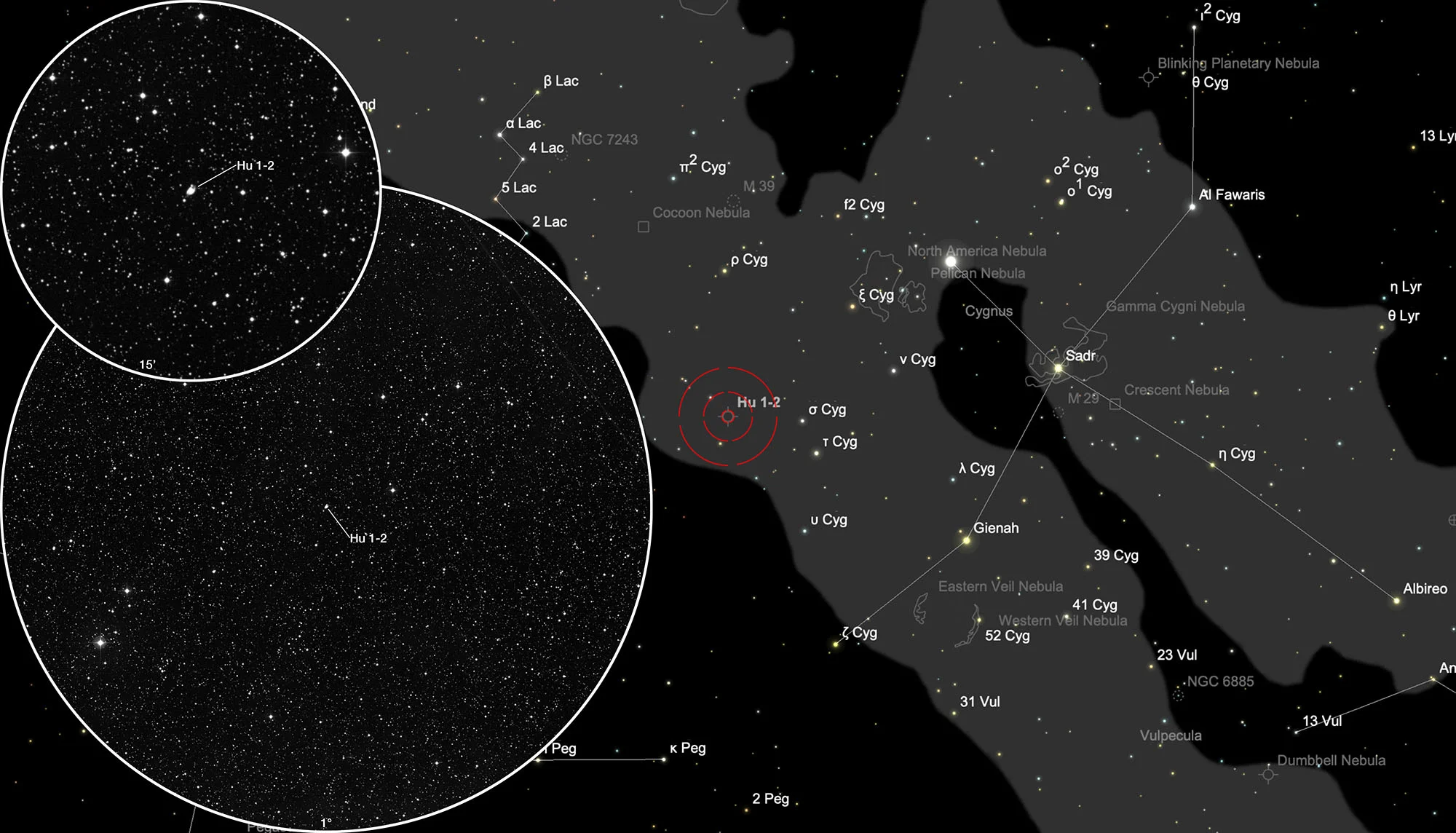Planetary Nebula Humason 1-2

History
The planetary nebula Hu 1-2 (PN G086.5-08.8, PK 086-08.1), was discovered on 11 October 1920 by Milton Lasell Humason with spectrograms made with the 10 inch Cooke telescope on Mount Wilson Observatory. On November 9 in the same year he discovered another PN (Humason 1-1). He wrote: «Edwin Hubble observed both objects visually with the 60 inch reflector on December 9 1920. Each appeared as a small disk about 5" in diameter, the first being irregular in outline, the second nearly circular.» [504] However, there must have been a mix-up as Hu 1-1 has a round shape and Hu 1-2 is bipolar.

Physical Properties
Hu 1-2 is bipolar, hour-glass shaped nebula with fast, highly collimated outflows that have a speed of >340 km/s. This is much higher than in most PNe. Neither the morphology nor the kinematics of the central, z-shaped innermost region can be simply described as a waist or torus located between the two bipolar lobes. The knotty morphology of this region are suggestive of a ‘broken’ equatorial ring. The PN probably experienced notable violent dynamical processes during its formation. It is not clear whether the central star is a binary. The age is estimated to be less than 1100 years and the distance to 3.5 kpc. Apparent brightness: V 12.0 mag, J 11.6 mag, H 11.6 mag, K 10.9 mag. [145][505]
| Designations | PN G086.5-08.8: Hu 1-2, PK 86-08.1, Anon.21h31m, ARO 89, VV 267, VV' 553 |
| Right Ascension (J2000.0) | 21h 33m 08s |
| Declination (J2000.0) | +39° 38' 01" |
| Dimensions | 8.3" (optical), 1.7" (radio) |
| Distance | 1.6 kpc |
| Radial Velocity | -9.0 ± 8.1 km/s |
| Expansion Velocity | 29.0 (O-III) 32. (N-II) km/s |
| C-Star Designations | AG82 432 |
| C-Star Magnitude | V: 17.32 |
| Discoverer | HUMASON 1921 |
Finder Chart
The planetary nebula Hu 1-2 is located in the Milky Way of the constellation Cygnus. On 14 August it is in opposition to the Sun and crosses the meridian at local midnight. In the months April to January it can be seen best.
